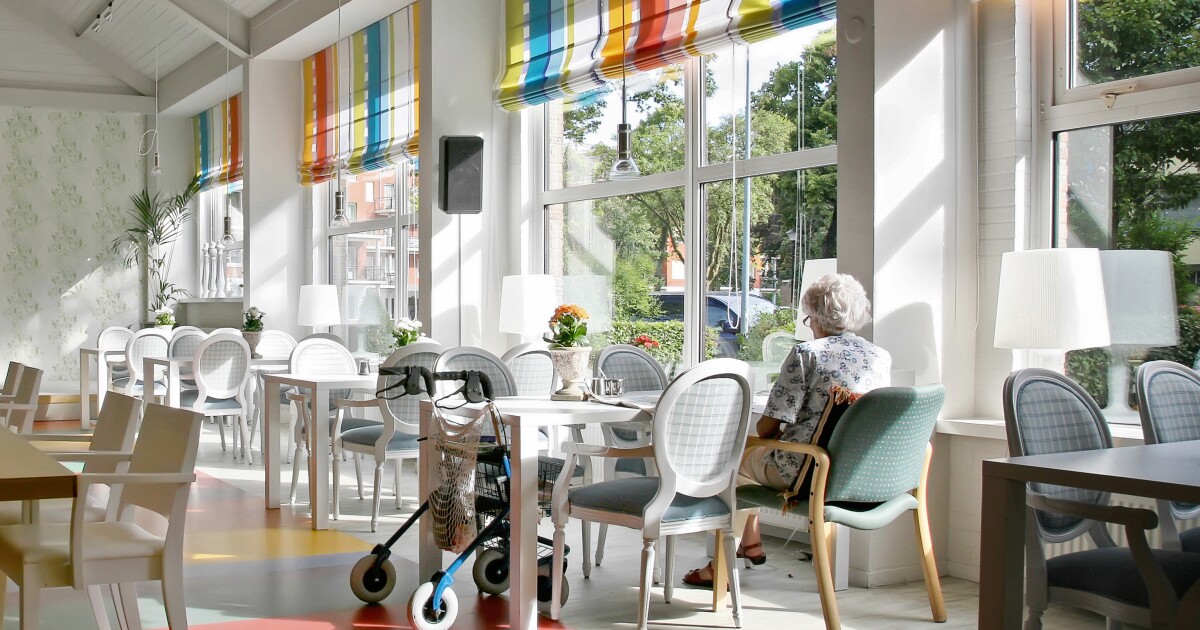
Senior housing properties are undergoing a rocky period as rising interest rates and staffing costs reduce their profits — and as post-COVID occupancy trends continue shaking out.
The good news is that the pressures facing senior housing properties are easing, according to bankers who lend to the sector. Profit margins are down across the board, but bankers say many property owners have stayed resilient and are on track to keep paying their loans.
If the picture stays somewhat benign, that would provide some cushion to banks as other sectors of commercial real estate face worries over their health. The office market is particularly under the microscope, as the rise of remote and hybrid work raises questions over whether the country needs less office space today than it did before COVID.
In contrast, bankers and analysts say an aging U.S. population provides a long-term opportunity for those who navigate the near-term challenges.
"This is the beginning of the pop that we've been talking about for 20 years in this industry," said Adam Sherman, the head of CRE and seniors housing at Live Oak Bancshares, a $10.8 billion-asset bank in Wilmington, North Carolina.
The past few years haven't been easy, however. Staffing costs have jumped, with property owners needing to pay nurses and employees more in a competitive job market. Labor shortages prompted property owners to turn to temporary agency staffing — a much more expensive source — though observers say the need for backfilling employees has eased.
Occupancy rates are also continuing to recover from the hit they took during the pandemic. Demand is rising as fears of the virus wind down and return-to-office mandates mean children are less able to take care of their aging parents at home.
Occupancy rates aren't quite back to pre-COVID levels, said Beth Mace, an economist and senior advisor at the National Investment Center for Seniors Housing & Care. But they've also been held down because the recent completion of new senior housing properties has increased the supply of units.
"We still have some room to go, but in general, the market fundamentals are in a very positive and favorable position today and slated for a continued improvement," Mace said.
One big challenge, she said, is the sharp rise in interest rates over the past year and a pullback in lending appetite among some banks. Billions of dollars' worth of loans are up for refinancing in the next couple of years, she said, which will prompt lenders to scrutinize whether property owners have enough cash flows to meet rising interest and staffing costs.
The New York-based company announced the launch of a health care lending unit after capitalizing on recent bank failures to add seven deposit-focused banking groups this spring and summer.
"It's the same issues that are facing other property types, but it's a relatively smaller sector," she said.
In recent months, executives at banks such as Regions Financial in Birmingham, Alabama, and M&T Bank in Buffalo, New York, have said they're closely monitoring how those challenges are affecting the senior housing borrowers with whom they work. A few banks have placed a property or two on special watchlists but haven't raised major concerns over broader stress.
Senior housing properties in the portfolios at Freddie Mac and Fannie Mae, which help provide financing to the sector, have seen their delinquency rates rise a bit.
In July, Live Oak Bank executives said they placed a memory care facility into a nonperforming loan category but that executives were cautiously optimistic about it. Sherman, the Live Oak CRE executive, said the bank's senior housing portfolio remains healthy and within expectations despite thinner operating margins. Live Oak's clients have been cutting expenses and raising rents to recover their margins.
Similarly, senior housing clients at Regions Financial have been able to raise rents and improve their margins "without a negative impact on occupancy" in most cases, said Mike Mauldin, who leads the bank's healthcare specialized industry group."Long term, there continues to be opportunity for the senior housing sector, as senior adults remain the fastest growing segment of the U.S. population," Mauldin said in an email.
He also highlighted one positive side effect of rising interest rates. While senior housing properties' interest costs are higher, a sharp increase in borrowing costs has also slowed down construction of new properties that might compete with them. That will tamp down the supply of new senior housing "for the foreseeable future," he said, helping occupancy rates at existing properties increase.
BOK Financial, an Oklahoma-based bank with senior housing businesses spanning most of the country, put about 25% of its portfolio under closer watch after the pandemic hit. But the share of loans that requires extra monitoring has dropped to about 14% as metrics continue improving, said Scott Andrews, who leads BOK's health care banking group.
None of those have presented real risk of losses to the $49 billion-asset bank, he said, but they've required extra work from bankers to make sure they're protecting their risks adequately.
"We saw things migrate toward being more heavily monitored, but we have yet to have a credit where we feel like we're going to lose money," Andrews said.
Some banks that are less familiar with the sector have taken a step back as they read headlines pointing to more risk, he said. But BOK had its highest loan origination total in the sector last year as others retreated.
"We feel like we really understand the space and we're able to back well-capitalized people who can operate facilities," he said.



